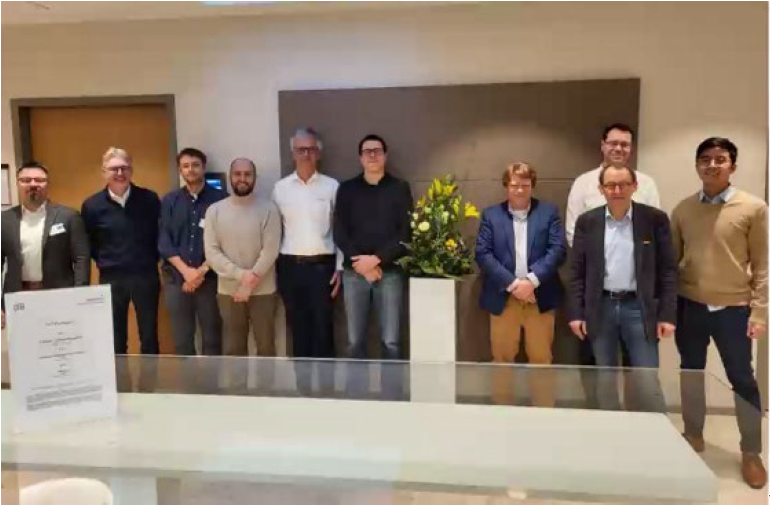IAMTS Newsletter #6-2023
IAMTS Newsletter #6-2023
IAMTS WORKSHOP BERLIN
By Marijan Jozic and Tuan Duong Quang
As we know, Working Group 2 (WG2) is managed by Duong Quang Tuan (TÜV SÜD). The important activity of WG 2 was to establish a testbed database. That job was pretty well done and at IAMTS site you will be able to find 93 global testbeds in the database. It was of course a group effort, and we are happy to be able to notify the great success. Perhaps, I can say that IAMTS owns the biggest and independent database of testbeds. However, the WG2 activity is not stopping there. It is time to lift it to the next level.
The next level would be to establish the certification scheme for those testbeds. That is much easier to say than to do.
The automated driving functions are and will be developed, tested, and operated in specifically designed scenarios. To reflect and simulate the scenarios with possible wide testing configurations the testing “locations” –including closed testbeds, the public road and their digital twins must play a more essential role in the future testing methodology. Beside the well applied V-Model between development and validation, a standard framework to define and describe testbeds, especially the parameters of tracks and infrastructure is demanded.
Testbeds have been around for decades. So far, these have been designed for traditional vehicles. It is unclear which testbeds are designed for the increased complexity of autonomous vehicles. Additionally, it is uncertain which requirements testbeds have to fulfill in order to enable the testing of automated vehicles. For those reasons a certification scheme is being developed by WG2.
The idea is that the certification scheme describes all tests and requirements for testbeds for testing automated driving functions that result from certifications, rating protocols and standards using industry recognized taxonomy and practices. The certification scheme can be used to systematically verify which requirements are met by the testbed under consideration.
Therefore, a kick-off workshop was organized in Berlin to do the first step in that direction. Tuan was pleased to announce that many companies and individuals were very enthusiastic about the workshop focusing on testbed certification. There were 36 participants (Testbed operators, Testbed users, Testbed equipment providers and Global stakeholders) in total.

To get a grip on the subject the participants were divided in three breakup sessions to focus on important subjects to begin the process. Those subjects are WHY a certification scheme is needed, HOW the certification process should look like and WHAT topics would the certification cover. I will not bother you about details and outcome of each session, but I believe that it is important to mention the take aways from the meeting which are:
- Common consensus about the need of a certification scheme
- IAMTS as an enabler: Brings together all relevant parties
- More involvement of authorities would be required
- More international involvement is precondition
- Starting the standardization process is too early right now
Finally, there is one important conclusion: The test bed operators don’t see the competition between each other. They see a need for a collaboration and that is fantastic to hear.
Herewith we would like to thank all participants of Berlin workshop for great cooperation and enthusiastic contribution in this new WG 2 activity.






